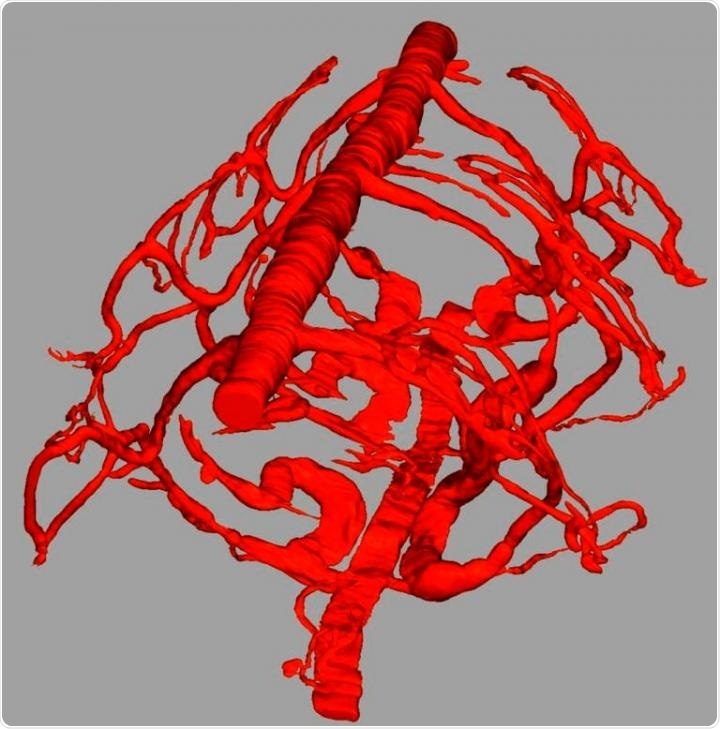The marine worm Platynereis dumerilii has enabled researchers from CNRS, Université de Paris, Sorbonne Université, University of Saint Petersburg, and the University of Rio de Janeiro to demonstrate that hemoglobin appeared independently in several species and actually evolved from a single gene transmitted to all by their last common ancestor.

The Platynereis dumerilii vascular system in three segments. Image Credit: Song et al./BMC Evolutionary Biology.
The genes of P. dumerilii have evolved very slowly. The results of the study were published in BMC Evolutionary Biology on December 29th, 2020.
Red blood occurs not just in humans or mammals. The red color is due to the presence of hemoglobin—a complex protein specialized in transporting the oxygen occurring in the circulatory system of vertebrates, as well as annelids (a worm family whose most famous members are earthworms), crustaceans (such as daphnia or “water fleas”), and mollusks (specifically pond snails).
Researchers considered that for hemoglobin to have occurred in diverse species, it must have been “invented” multiple times during evolution. However, the present study has shown that all of these hemoglobins formed “independently” and derive from a single ancestral gene.
Scientists at the Institut Jacques Monod (CNRS/Université de Paris), the Laboratoire Matière et Systèmes Complexes (CNRS/Université de Paris), the Station Biologique de Roscoff (CNRS/Sorbonne Université), the Universities of Saint Petersburg (Russia) and Rio de Janeiro (Brazil), guided the study on P. dumerilii—a small marine worm with red blood.
It is regarded as an animal that evolved slowly since its genetic traits are closely related to those of the marine ancestor of most animals, Urbilateria. Comparing these worms with other species that have red blood has been helpful to trace back to the origin of hemoglobin.
The focus of the study was on the wider family to which hemoglobins belong: globins—proteins that occur in nearly all living beings that “store” gases like oxygen and nitric oxide. However, globins normally act within the cells since they do not circulate in the blood like hemoglobin.
This study demonstrates that in all species with red blood, the same gene that makes a globin known as “cytoglobin” evolved independently to transform into a hemoglobin-encoding gene. The new circulating molecule rendered oxygen transport more efficient in their ancestors, who turned larger and more active.
At present, researchers intend to change the scale and continue this study by analyzing when and how the various specialized cells of bilaterian vascular systems evolved.
Source:
Journal reference:
Song, S., et al. (2020) Globins in the marine annelid Platynereis dumerilii shed new light on hemoglobin evolution in bilaterians. BMC Evolutionary Biology. doi.org/10.1186/s12862-020-01714-4.